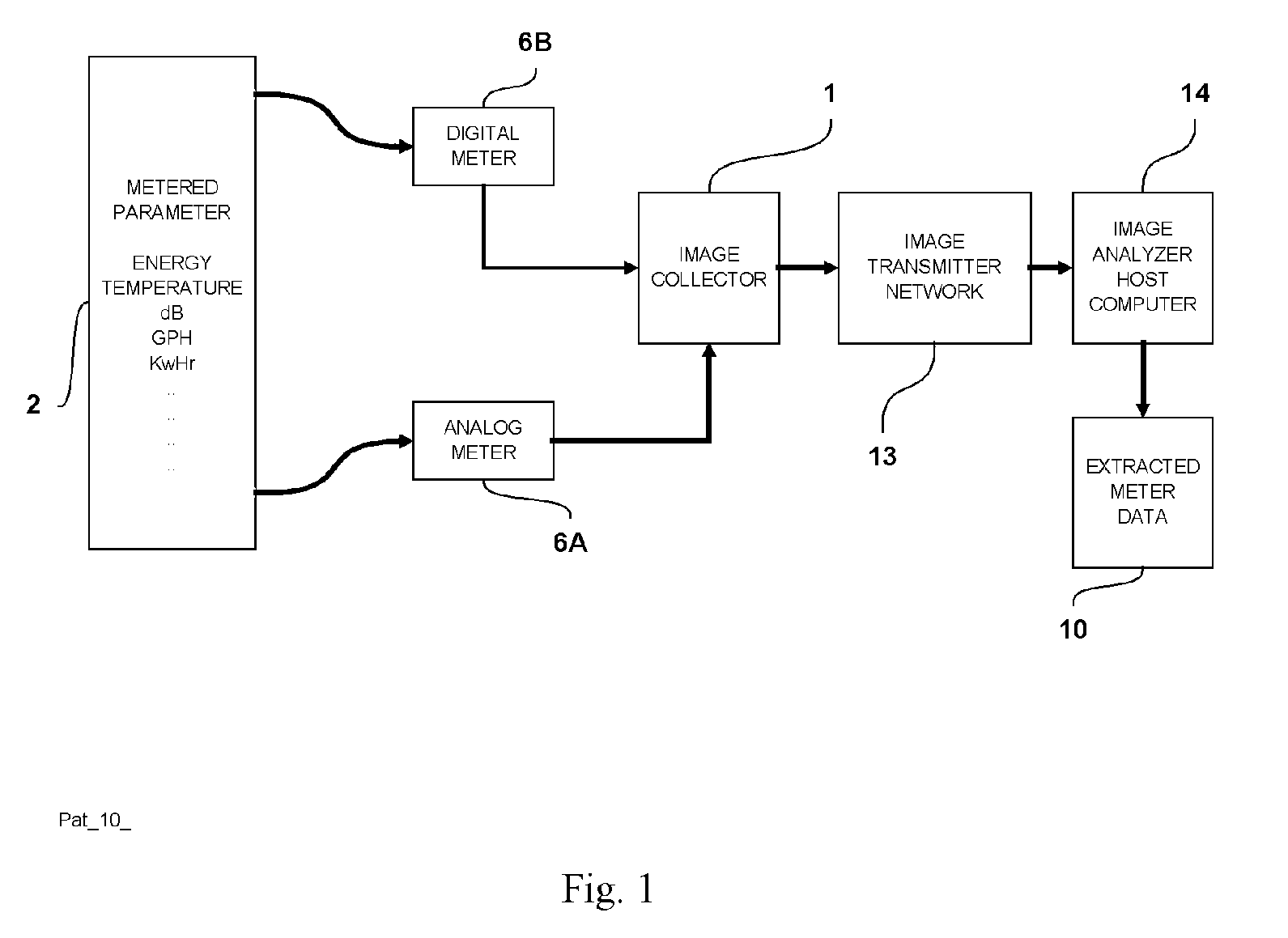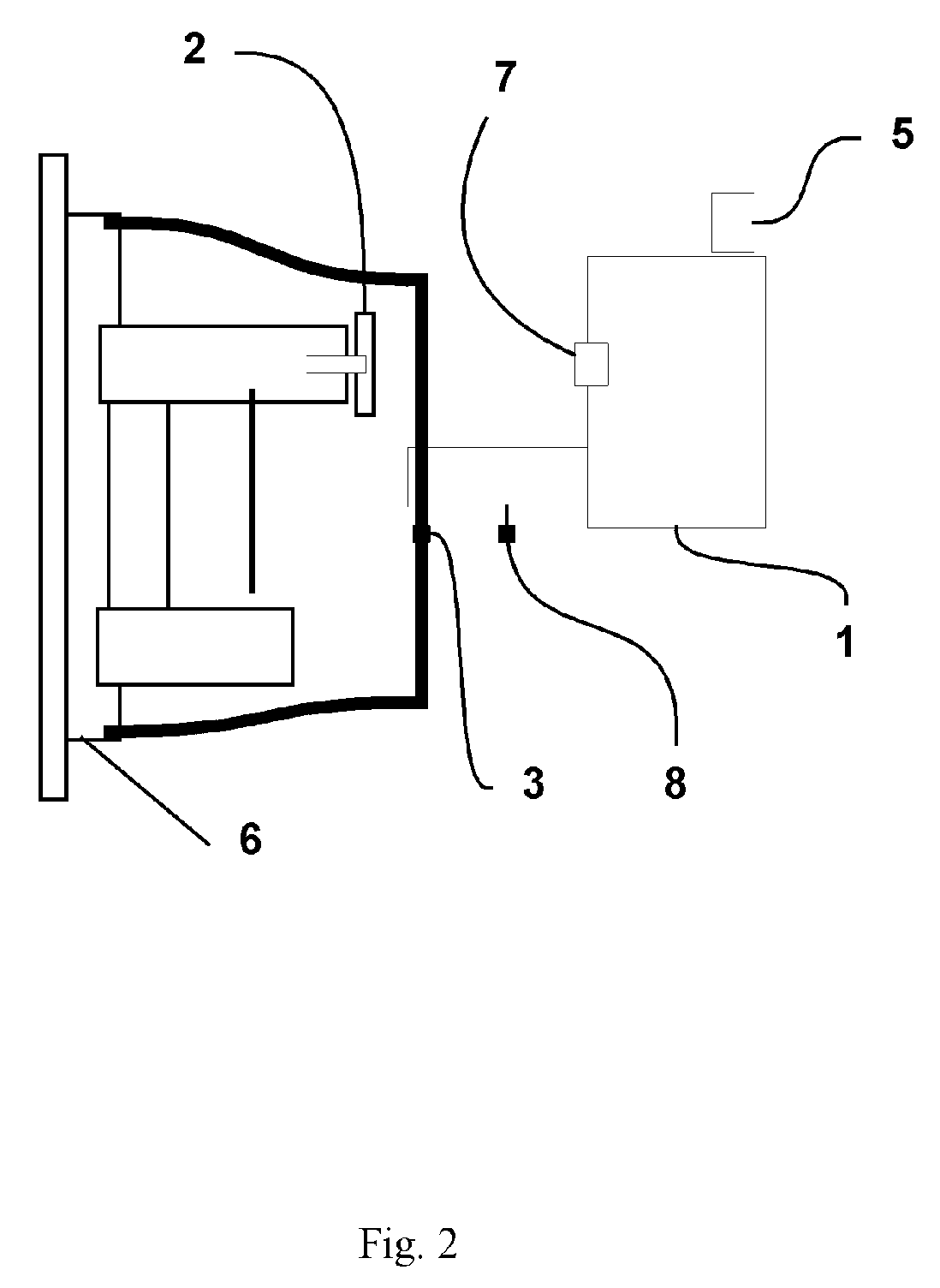Remote meter reading using transmitted visual graphics.
a technology of transmitted visuals and meter readings, applied in the direction of volume metering, liquid/fluent solid measurement, instruments, etc., can solve the problems of complex automatic meter reading devices, high cost, complex and expensive process, etc., to reduce the operating cost of meter readings, increase the capability of meter readings, and avoid costly operations
- Summary
- Abstract
- Description
- Claims
- Application Information
AI Technical Summary
Benefits of technology
Problems solved by technology
Method used
Image
Examples
Embodiment Construction
[0075] A preferred embodiment of the techniques of the present invention of “visual-metering” will now be described in the context of a typical RMR operation. Those skilled in the art, however, will recognize that the central ideas of the invention are not limited to the details enumerated below. Over the years meter reading has been made manually by human meter readers who literally walk the line and read each meter. Changes have allowed some companies to read meters by using special meters equipped with radio frequency transponders, which are both expensive and bulky to read meters; by “drive-by” operations using an antenna equipped truck. There are many systems with dedicated communication lines either wired, wireless, CATV, DSL or radio communication systems. The fundamental need is to get the meter reading data to the utility or operator as cheaply and as quickly as possible.
[0076] RMR needs are simple. Electric, gas, water and other utilities and other operators require a rel...
PUM
 Login to View More
Login to View More Abstract
Description
Claims
Application Information
 Login to View More
Login to View More - R&D
- Intellectual Property
- Life Sciences
- Materials
- Tech Scout
- Unparalleled Data Quality
- Higher Quality Content
- 60% Fewer Hallucinations
Browse by: Latest US Patents, China's latest patents, Technical Efficacy Thesaurus, Application Domain, Technology Topic, Popular Technical Reports.
© 2025 PatSnap. All rights reserved.Legal|Privacy policy|Modern Slavery Act Transparency Statement|Sitemap|About US| Contact US: help@patsnap.com



